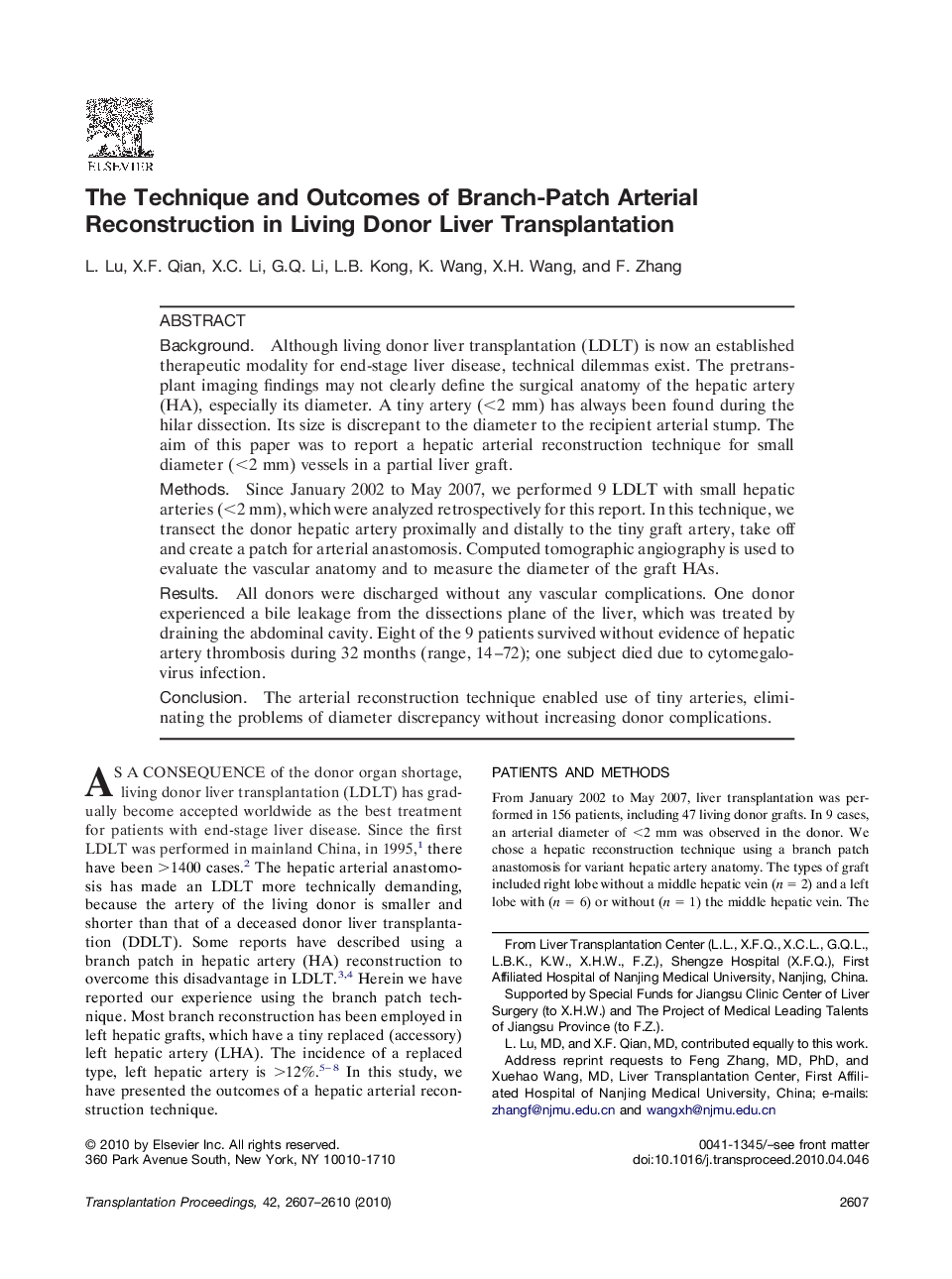| Article ID | Journal | Published Year | Pages | File Type |
|---|---|---|---|---|
| 4259447 | Transplantation Proceedings | 2010 | 4 Pages |
BackgroundAlthough living donor liver transplantation (LDLT) is now an established therapeutic modality for end-stage liver disease, technical dilemmas exist. The pretransplant imaging findings may not clearly define the surgical anatomy of the hepatic artery (HA), especially its diameter. A tiny artery (<2 mm) has always been found during the hilar dissection. Its size is discrepant to the diameter to the recipient arterial stump. The aim of this paper was to report a hepatic arterial reconstruction technique for small diameter (<2 mm) vessels in a partial liver graft.MethodsSince January 2002 to May 2007, we performed 9 LDLT with small hepatic arteries (<2 mm), which were analyzed retrospectively for this report. In this technique, we transect the donor hepatic artery proximally and distally to the tiny graft artery, take off and create a patch for arterial anastomosis. Computed tomographic angiography is used to evaluate the vascular anatomy and to measure the diameter of the graft HAs.ResultsAll donors were discharged without any vascular complications. One donor experienced a bile leakage from the dissections plane of the liver, which was treated by draining the abdominal cavity. Eight of the 9 patients survived without evidence of hepatic artery thrombosis during 32 months (range, 14–72); one subject died due to cytomegalovirus infection.ConclusionThe arterial reconstruction technique enabled use of tiny arteries, eliminating the problems of diameter discrepancy without increasing donor complications.
